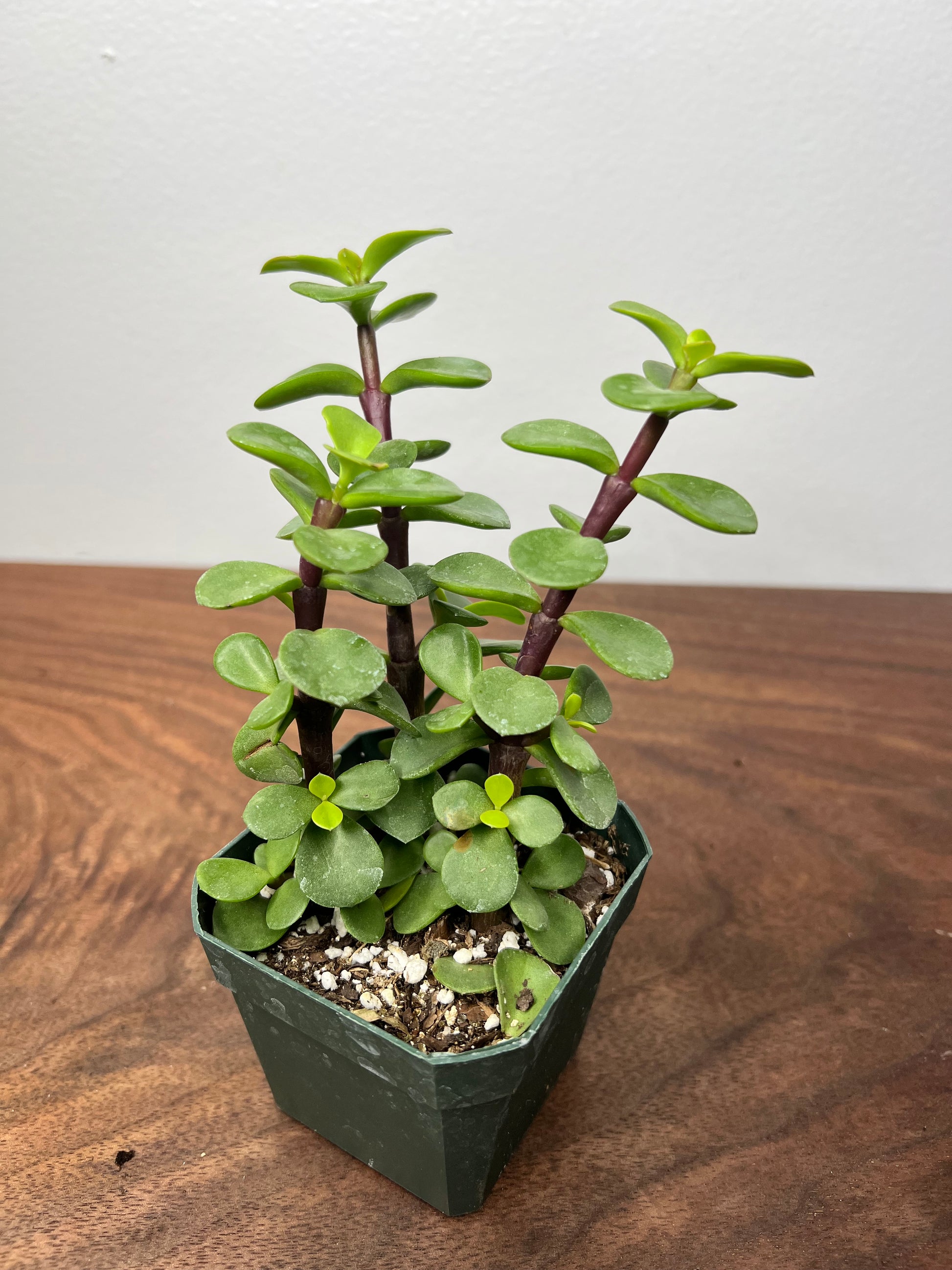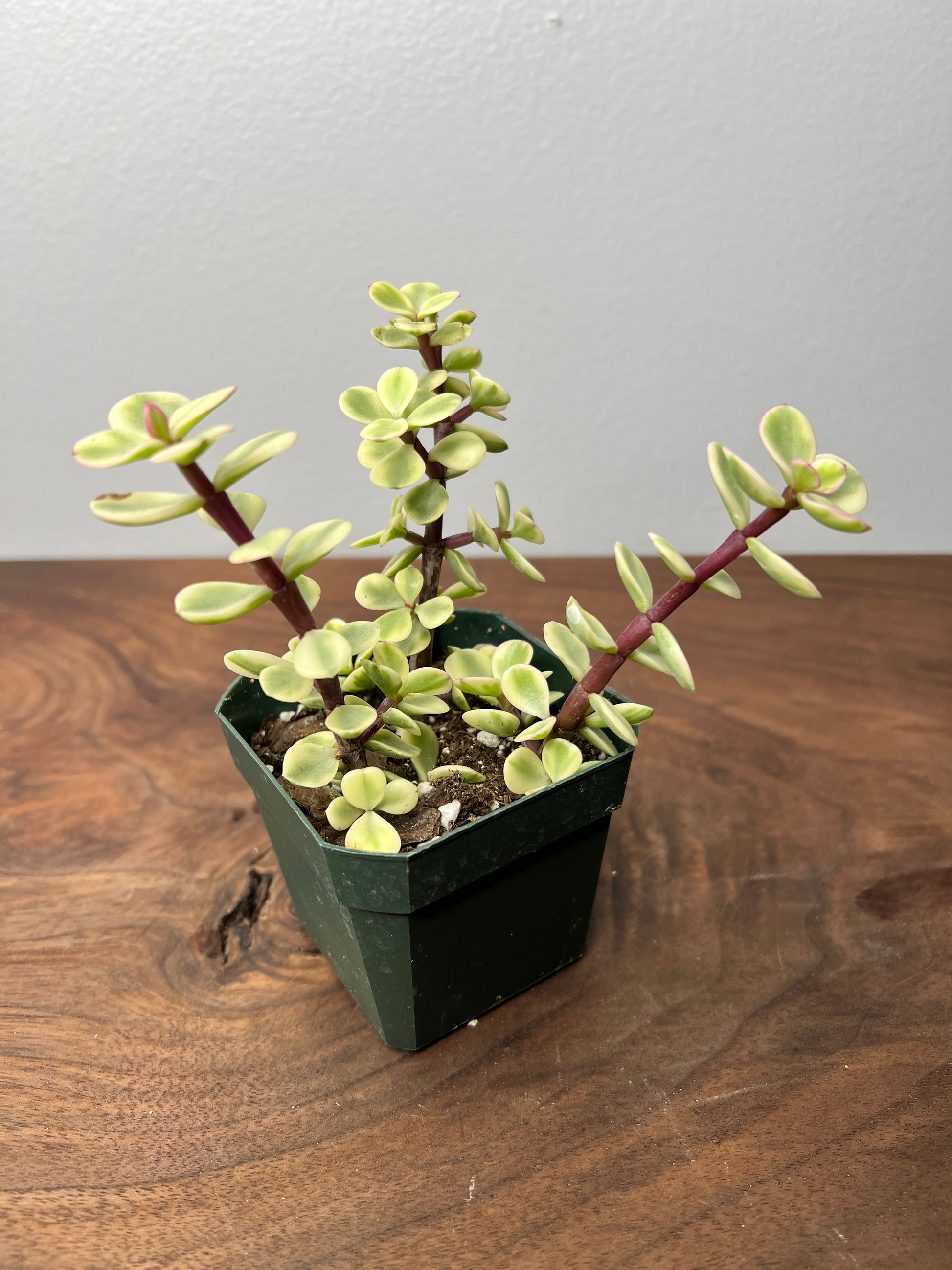The Rooted Plant Shop
Elephant bush 3”
Elephant bush 3”
Couldn't load pickup availability
Portulacaria afra, commonly known as "Elephant Bush" or "Porkbush," is a hardy and low-maintenance succulent that thrives in a variety of home environments. Here's how to care for it:
Light
-
Direction of Light: Portulacaria afra does best in bright, indirect light, ideally near a south or west-facing window. While it can tolerate some direct sunlight, too much can cause the leaves to scorch. If the light is too dim, the plant may become leggy.
-
Ideal Placement: Place it in a spot with plenty of natural light, but avoid direct sun for prolonged periods, especially in summer.
Watering
-
Watering Frequency: Like most succulents, it prefers to dry out between waterings. Water when the soil is completely dry. During the growing season (spring and summer), you might water every 2-3 weeks, while in fall and winter, watering can be reduced to once a month.
-
Watering Tips: Ensure that the pot has good drainage to prevent root rot. Water thoroughly, allowing excess water to drain away, but avoid leaving the plant sitting in water.
Temperature
-
Preferred Temperature: This plant thrives in temperatures between 65°F (18°C) and 85°F (29°C). It’s sensitive to frost, so keep it indoors or move it to a protected area if temperatures drop below 50°F (10°C).
Soil
-
Soil Type: Portulacaria afra prefers well-draining, slightly sandy or cactus mix soil. It’s important that the soil doesn't retain too much moisture, as this can lead to root rot.
Fertilizing
-
Fertilization: During the growing season (spring and summer), feed your Portulacaria afra with a balanced liquid fertilizer diluted to half strength every 4-6 weeks. Don’t fertilize in the winter when the plant is dormant.
Problems to Watch Out For
-
Overwatering: The most common problem is overwatering, leading to root rot. Ensure the soil dries out completely between waterings and that the pot has good drainage.
-
Leggy Growth: This happens when the plant isn’t receiving enough light. If this occurs, move it to a sunnier spot to encourage compact growth.
-
Pests: Portulacaria afra can occasionally attract mealybugs, aphids, or scale. If you notice pests, treat with insecticidal soap or wipe the leaves with a damp cloth.
-
Leaf Drop: If the plant is stressed (due to overwatering, too much sunlight, or insufficient water), the leaves may start to drop. Adjust care accordingly.
General Tips for Thriving
-
Pruning: If your Portulacaria afra becomes too leggy, you can prune it back to encourage fuller growth. It responds well to pruning and can even be propagated by cutting and rooting.
-
Repotting: Repot every 1-2 years to refresh the soil and check the root health. This is also a good time to move it into a slightly larger pot if it’s outgrowing its current one.
With the right conditions, Portulacaria afra is a resilient and attractive plant, adding a touch of greenery with minimal fuss!
Share
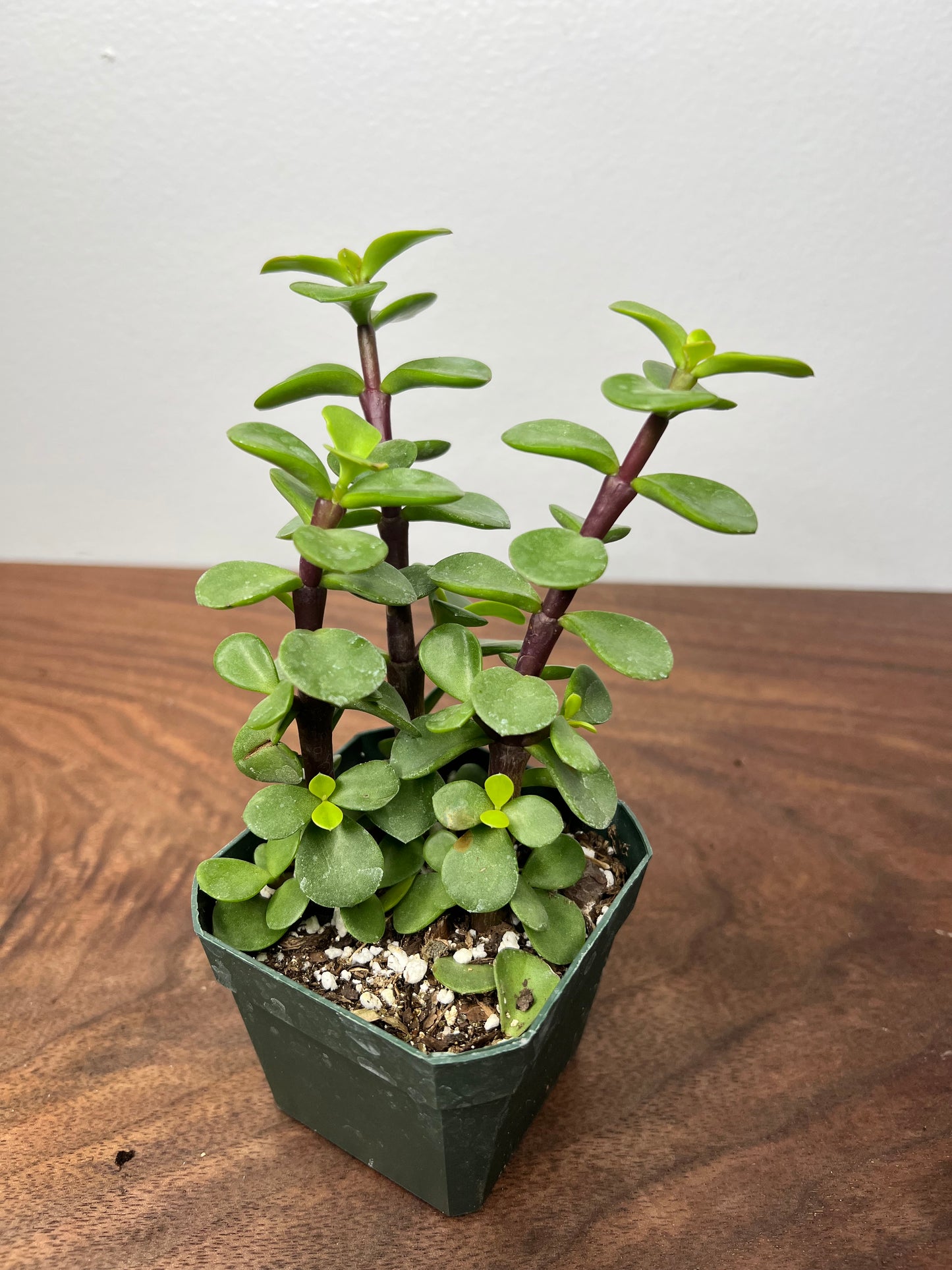
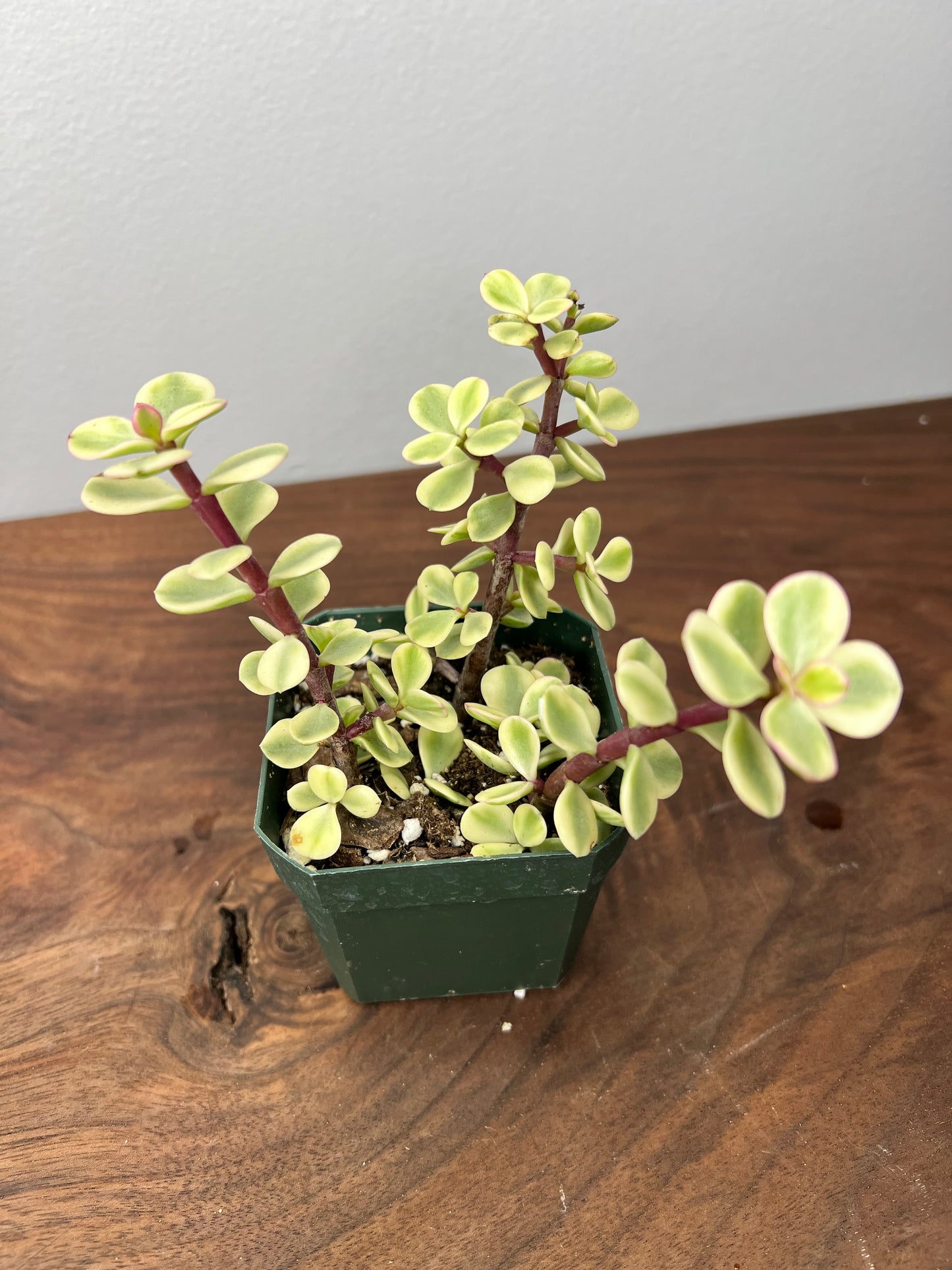
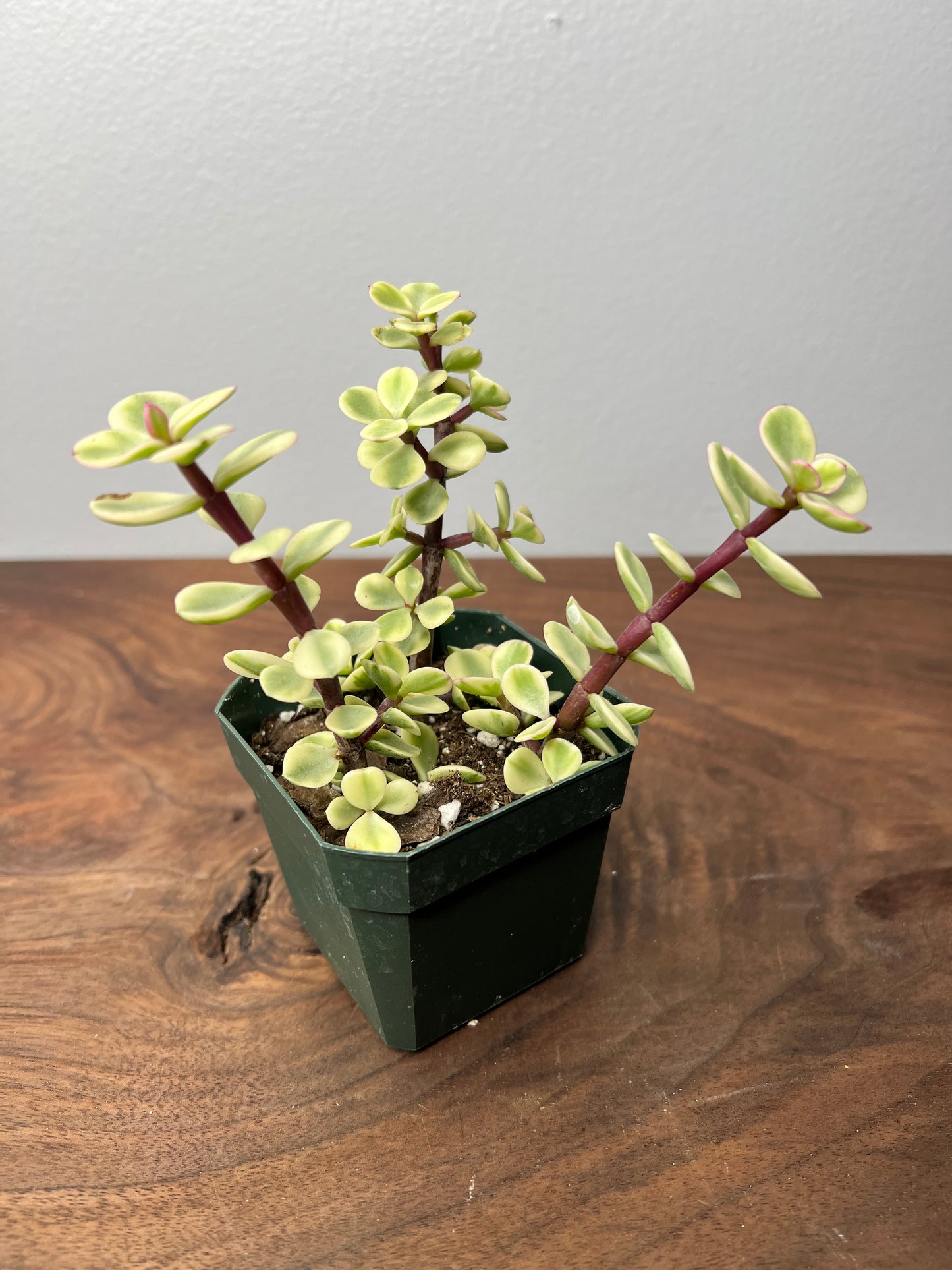
Let customers speak for us
from 357 reviewsMican’s are now my new favorite. I live in SC and the package was delivered in perfect shape. It was secure in the box. It’s currently doing great!

I love the tiny versions of things and this lil plant is no exception! Its beautiful! Arrived in perfect condition and was packaged wonderfully!

Received my stunning alocasia in just a few days and she’s adjusting nicely! I opted in for the safe weather shipping and it was packed well. I’ll definitely order from the rooted plant shop again. All because my TIK tok page told me to use 70% alcohol (which is a collection saving trick!)!!

This shop is top notch! Every plant arrives with perfect shipping care. If you follow the shop on social media you’ll learn so much!

Awesome plant , arrived very healthy and happy.

I love how my plants were so well packaged and arrived undamaged

I've had a lot of plants in my life, but this is probably the most unusual I've tried! I've also had quite a few real stones in my life as I grew up in a small family-owned gravel pit business! Melanie is so easy to work with, it is pleasure supporting her business.


